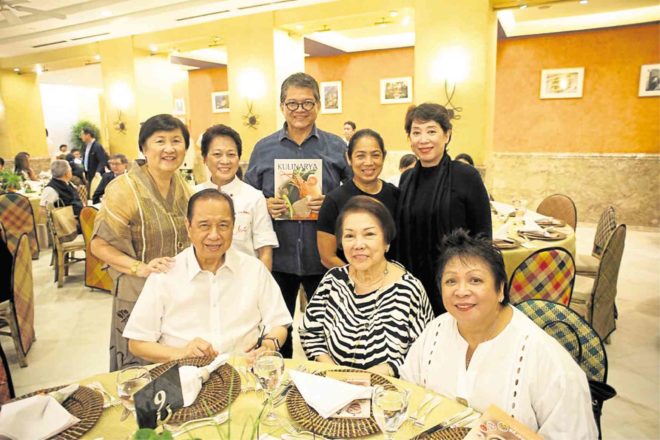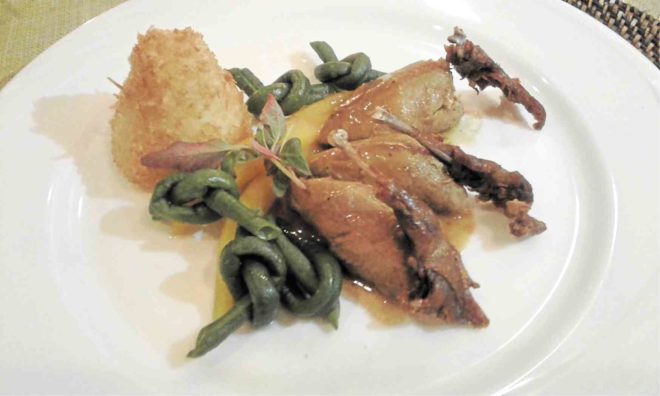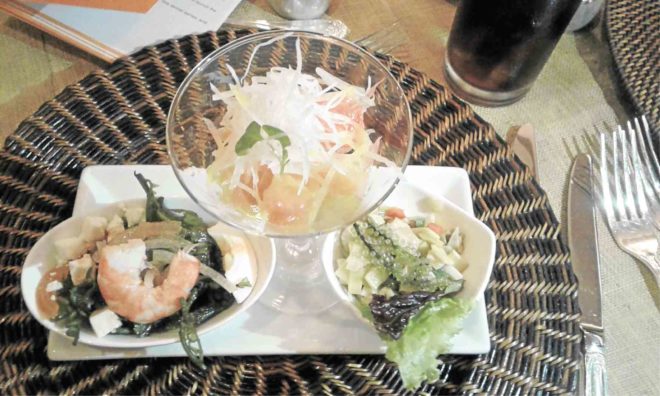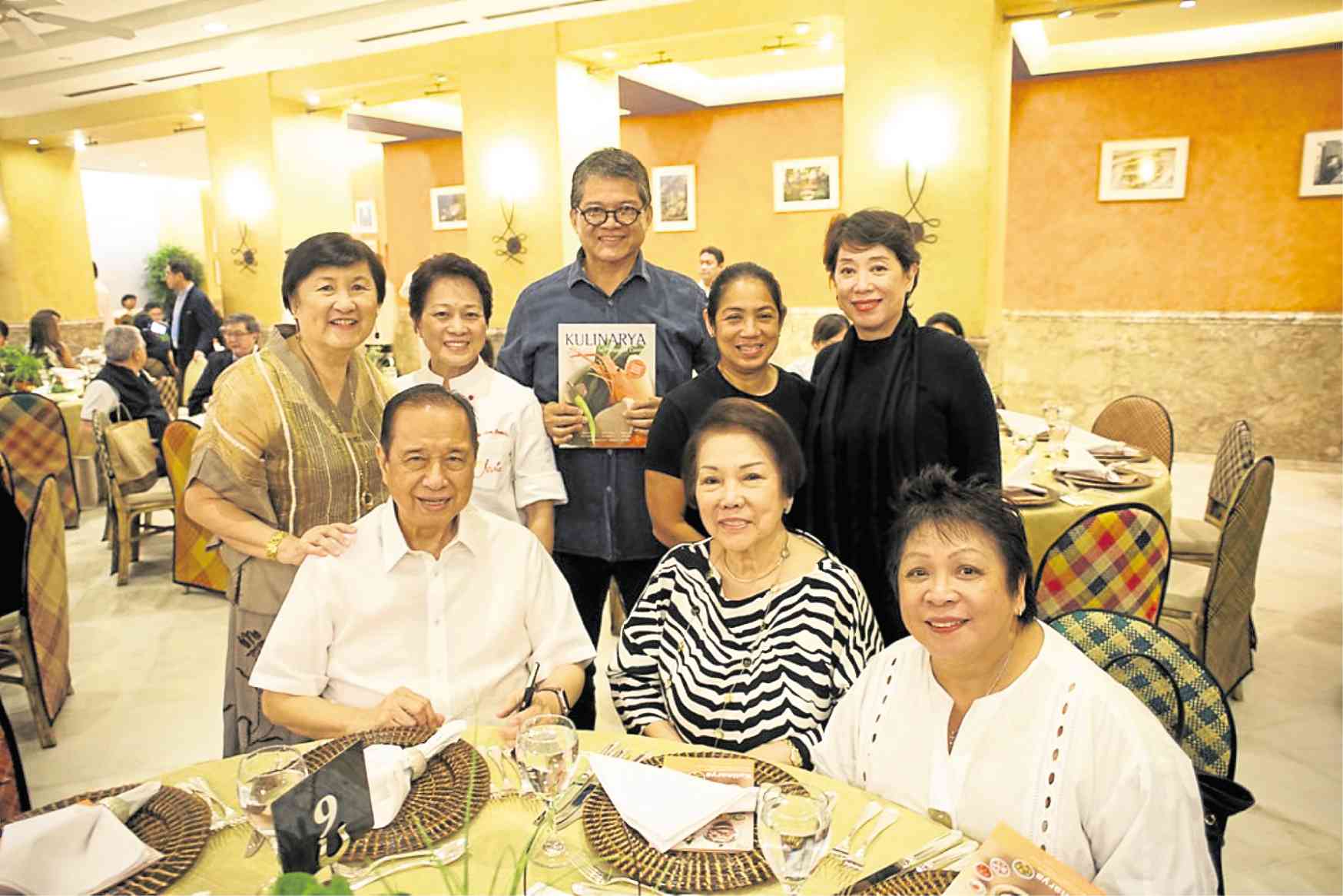
No one was counting but it has been almost 10 years since “Kulinarya: A Guidebook to Philippine Cuisine” was published. And no one was as excited about the reunion of the chefs (Glenda Barretto, Conrad Calalang, Myrna Segismundo, Claude Tayag, Jessie Sincioco, Margarita Fores), the photographer (Neal Oshima), and the editor (yours truly) of the book than Doris Ho, chair of Asia Society Philippines, which published it.
Everyone made it, in spite of the constant traveling for work or leisure, the guest chef appearances in other countries, and new projects like television culinary shows.
The event was a dinner at the Rockwell Club, the first in the series of featured “Kulinarya” chefs. Barretto, the leader of the group and head of Via Mare, started the series. This in spite of her busy schedule in catering international conventions and conferences, including the recent Asia-Pacific Economic Cooperation (Apec) Summit and the coming Asean Summit.
Ho, in her welcome remarks, recounted that it was Washington SyCip who asked her to organize Asia Society Philippines that had, as its debut project, a Philippine fashion show in the United States.
Because of the huge expense involved, she said it was an event that could not be done easily.
More practical would be “Kulinarya,” designed to showcase “classic Filipino dishes with the goal to have these known, recognized and loved around the world.”
My task was to deliver a short talk on Filipino food. It might seem like preaching to believers because the majority of guests were Filipino foodies.

But I have always observed that while one may know about the cooking of the place where one was born, grew up and now live, he or she is ignorant of other kinds of cooking from other regions. And I would like to point them out.
It is also important to tell the story of how the national table has evolved, starting with prehistoric preparations, what our ancestors ate, and Ho’s advocacy to encourage proper cooking to produce malinamnam (tasty) dishes, and to show that part of Filipino culinary culture is to eat with sawsawan (condiments) and serve food family-style but with elegance.
It was heartening to know that not only the foreign diplomatic guests appreciated the talk, but also Filipino guests who said they themselves didn’t know that much about our food.
Barretto was supposed to talk about the menu, but when the waiters appeared with the soup course, there was such a buzz in the dining room that she could hardly be heard. I guess it was enough that her food did the talking. And it started with cocktails: three starters were brought to guests in an anteroom—kinilaw na tanguigue, sisig in cornets, and ukoy (vinegar-cured mackerel, thrice-cooked pork, and shrimp fritters)—eaten different ways with our local rum,
lambanog (coconut vodka), tapuy (rice wine) and even non-alcoholic drinks like the camote tops juice.
‘Bulalo,’ ‘tinola’
The two kinds of soup were served very hot, a tribute to Via Mare’s vast experience in catering. One was bulalo served in small, thin mugs, the little cubes of beef brisket and corn kernels skewered in bamboo sticks. The other was a cup of chicken tinola, its presentation as a light custard inspired by the Japanese chawan mushi.
The seafood course had Pacific bass with prawns cooked pinais-style or steamed in a banana leaf with buko (young coconut) juice and gata (coconut milk). An eggplant omelet and Miponica brown rice mixed with ube (purple yam) accompanied this course.
Three kinds of salad were served in individual containers—pako (fern) with shrimp, pomelo with radish and banana heart. These were really better palate cleansers than the usual sherbet.

Three deboned pugo (quails) seemed like a lot at first glance, but perfectly cooked as adobo, finishing them was easy. The other chefs at the table remembered how they hadn’t cooked pugo for some time and wanted to know Barretto’s supplier.
The dessert had a sphere made of Malagos chocolate—the international award-winning chocolate from Davao—and in it was a mousse made of atis (custard apple). Holding the sphere in place was a mix of tapioca with coconut cream and providing sweetness and color were fruit balls of watermelon, mango and cantaloupe.
Because all the chefs were present, “Kulinarya” books were passed around for autographs. The question that evening: Is there is a second “Kulinarya” book in the works?
If yes, I hope it doesn’t take as long as the three years it took to publish the first one, which won the National Book Award for Best Food Book and Design and the international Gourmand Awards Best Historical Cookbook in 2008.









































